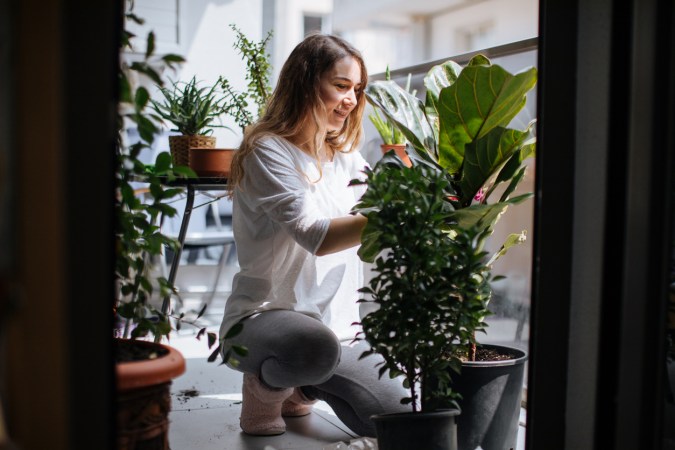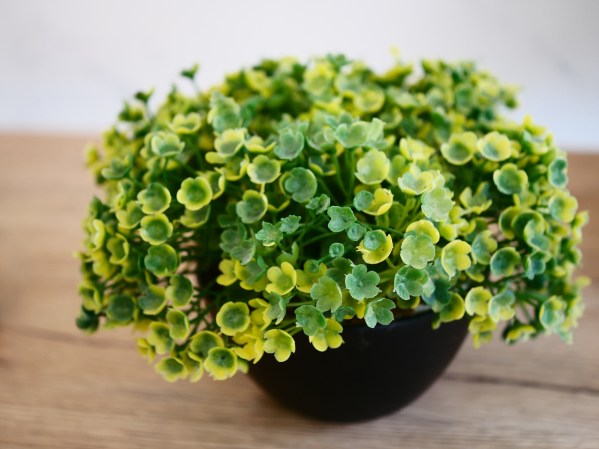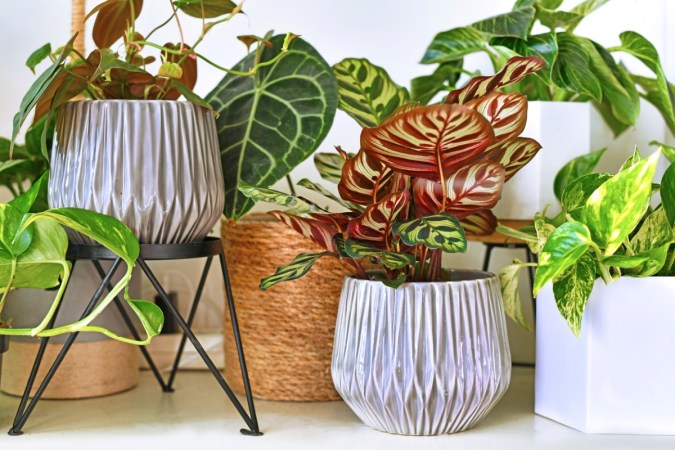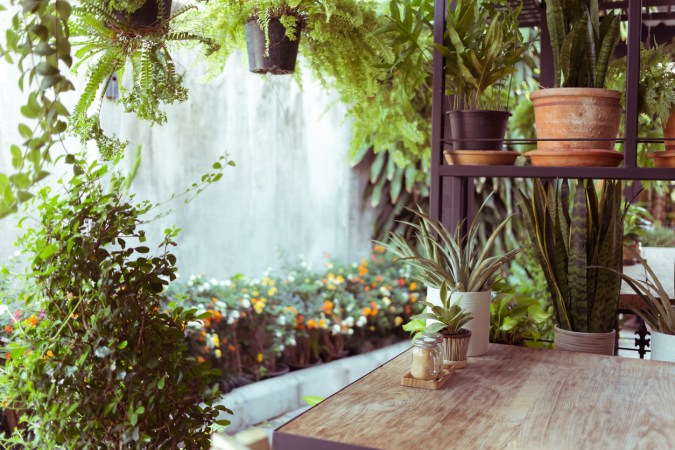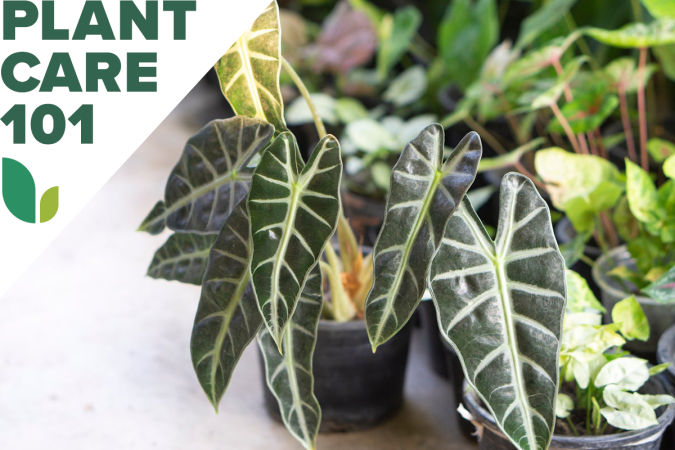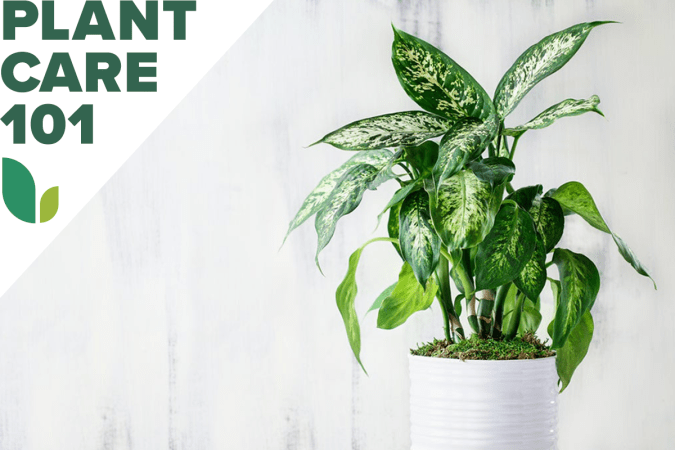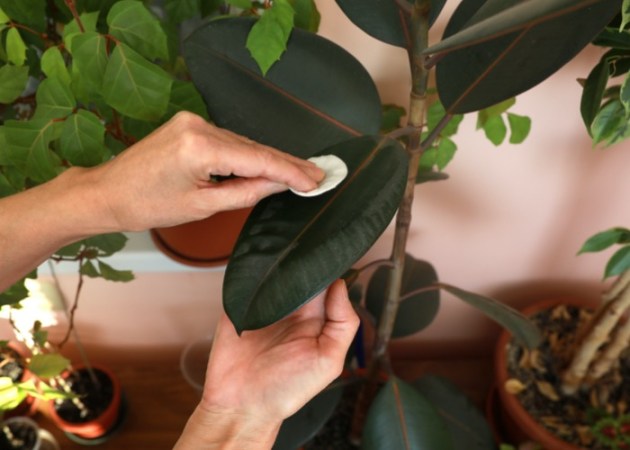We may earn revenue from the products available on this page and participate in affiliate programs. Learn More ›
It’s easy to assume that your indoor air is clean and safe. However, when sunlight hits a certain angle, you can see all the dust motes dancing in the air—even in the most immaculate homes.
Airborne dust is more than dirt; it’s a finely woven mix of many different substances, including dirt, skin cells, bacteria, pollen, plastic, environmental contaminants, and many other types of microscopic material. According to a study by the National Library of Medicine, selecting plants that attract and catch dust in their leaf waxes can help keep excess particles out of the air. Many plants can filter dangerous gasses, as well.
Here are 12 of our favorite houseplants that collect dust and look good doing it.
1. Rubber Plant (Ficus elastica)
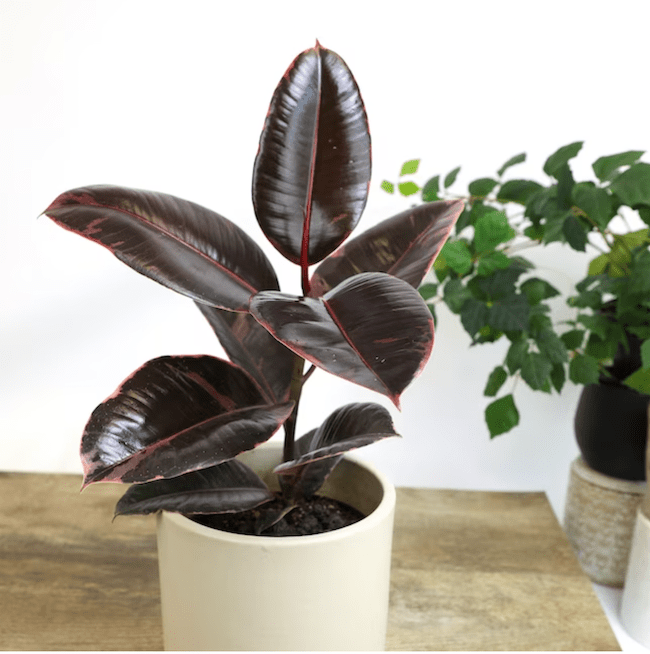
Rubber plants are beautiful statement plants with large waxy leathery leaves that grow up to 12 inches long. These large leaves attract dust and other impurities from the air due to their large surface area—and as these plants grow up to 10 feet or more, there is a greater surface area for catching particulate matter. According to a NASA clean air study, rubber plants are great at removing formaldehyde from the air.
RELATEAD: 10 Low Maintenance House Plants to Keep Indoor Air Fresh
2. ZZ Plant (Zamioculcas zamiifolia)
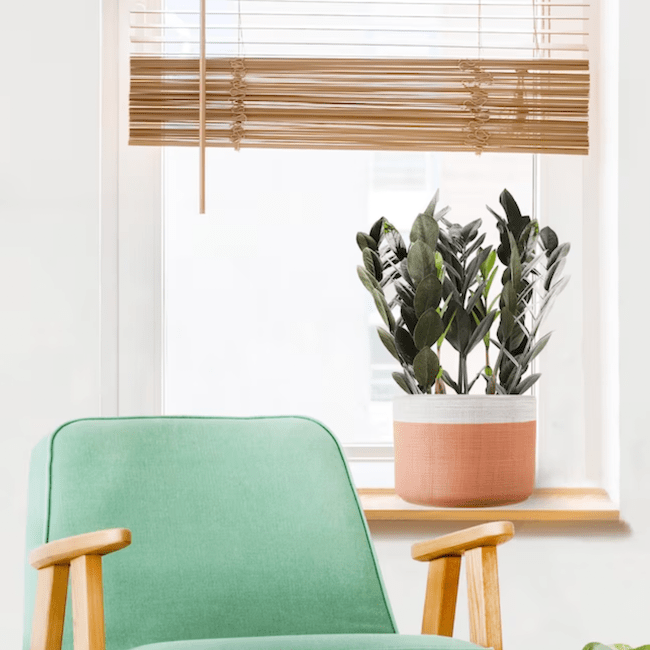
The ZZ plant is an easy-to-care-for tropical plant with 3-inch long glossy green leaves that change to a darker hue as they mature. ZZ plant is not only a beautiful addition to the home, but NASA studies have also found that this East African native is great at purifying the air and removing toxins such as toluene, xylene, and benzene.
ZZ plant is low maintenance and won’t need much care and attention to thrive, making it an excellent choice for those lacking a green thumb. Consider picking a beautiful black raven variety if you like plants that make a statement.
3. Spider plant (Chlorophytum comosum)
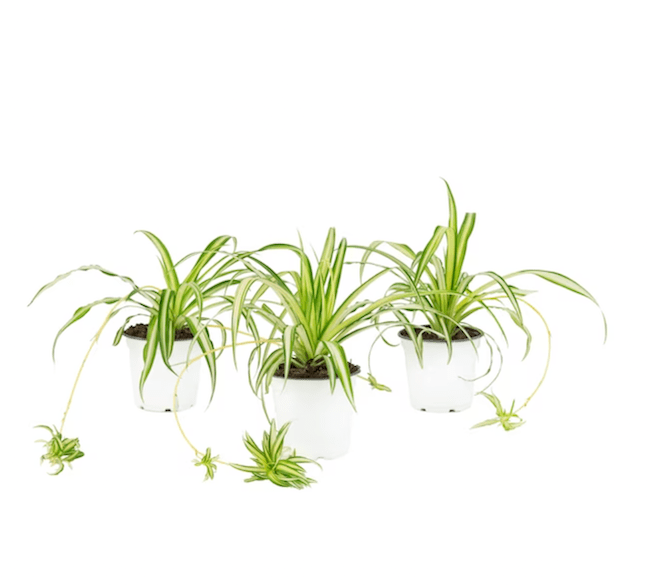
Spider plants are another low-maintenance houseplant that is also easy to propagate, likely explaining their popularity. They have thin, creased, variegated foliage that comes from the center of the plant and cascades to the sides, making them beautiful and providing many leaves that naturally capture airborne dust and particles. Spider plants help remove formaldehyde, xylene, and toluene, making the air a bit cleaner for occupants and visitors.
RELATED: The 12 Biggest Houseplant Trends for 2023
4. Swiss Cheese Plant (Monstera adansonii)
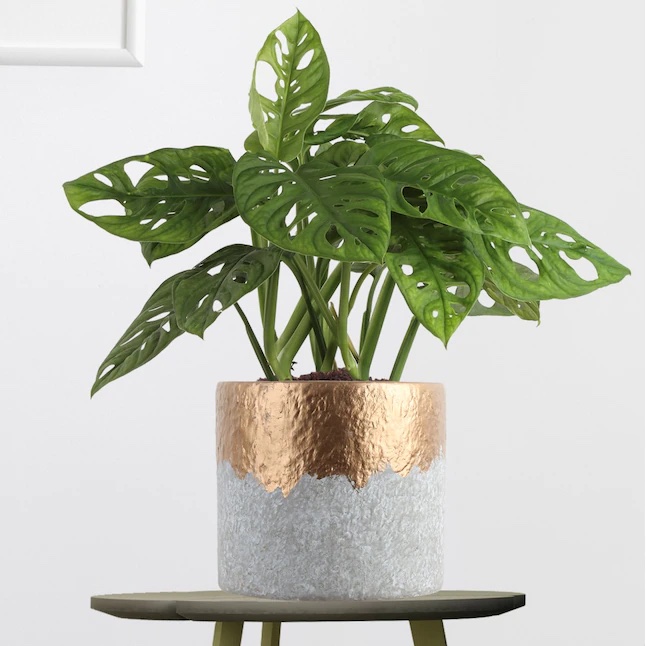
The tropical swiss cheese plant is known for its large, heart-shaped leaves. The large surface area of the leaves can collect dust and help remove toxins and chemicals from the air. The monstera’s leaves can be slightly sticky from sap, which can help prevent dirt from reentering the indoor atmosphere—although it may make cleaning the leaves a bit more involved.
RELATED: These Are the Most Popular Houseplants in America
5. Pot Mum (Chrysanthemum morifolium)
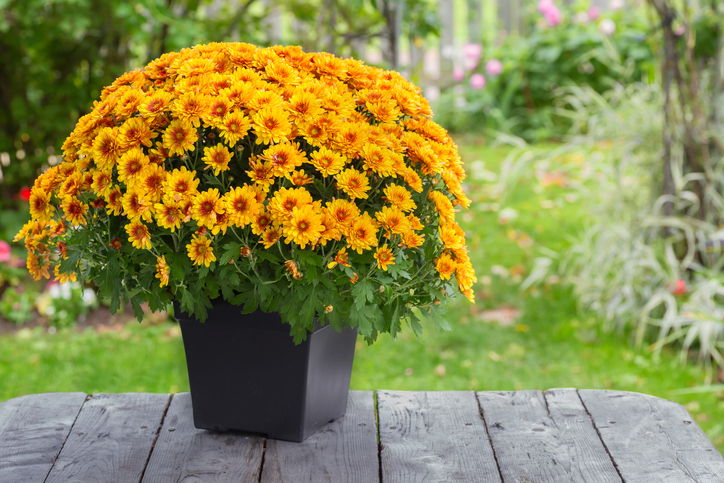
Though you may consider them an outdoor flowering plant, pot mums can be grown in outdoor beds, containers, or indoor pots—providing their location meets their need for full sun. Pot mums are beautiful flowering plants in various shades that bring color and brightness to a home. This plant purifies through its flowers and can help eliminate formaldehyde, xylene, benzene, and ammonia from the air.
6. Bromeliad (Bromeliacae)
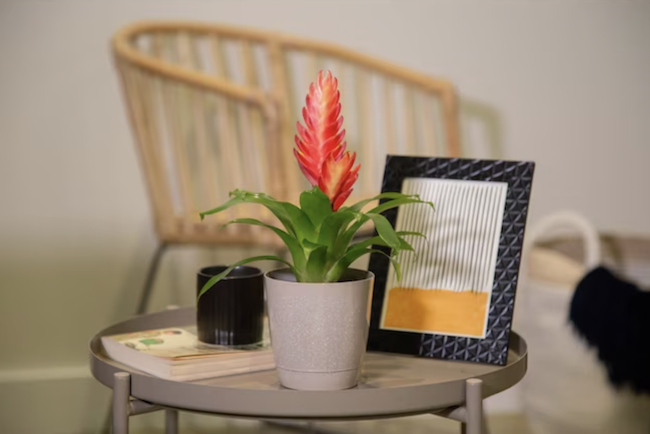
A stunning plant that flowers only once in its lifetime, the bromeliad has thick, stiff leaves that help clean the air in a home and collect dust in its leaves. Forbes published excerpts of a study by Vadoud Niri, which shows that the bromeliad plant was one of the best houseplants at removing several compounds from the air, including benzene, toluene, ethylbenzene, p-Xylene, o-Xylene, Acetone, methylene chloride, and chloroform.
RELATED: 10 Variegated Plants that Pack the Most Visual Interest
7. Peace Lily (Spathiphyllum spp.)
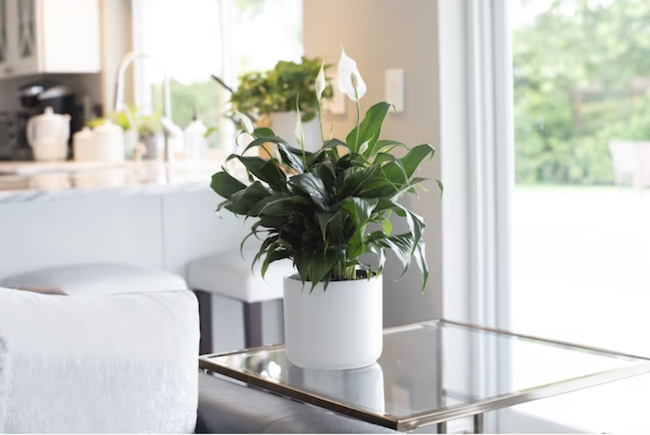
The peace lily is a beautiful flowering plant with large, glossy green arching leaves and spoon-like white flowers. This plant breaks down benzene and trichloroethylene, and according to a National Library of Medicine study, it has been proven to decrease concentrations of certain particulate matter. As the peace lily is relatively low maintenance, you can keep it as a beautiful piece of decor with the added benefit of purifying the air.
RELATED: This $10 Tool Turned Me Into a Green Thumb—Seriously!
8. Philodendron (Philodendron)
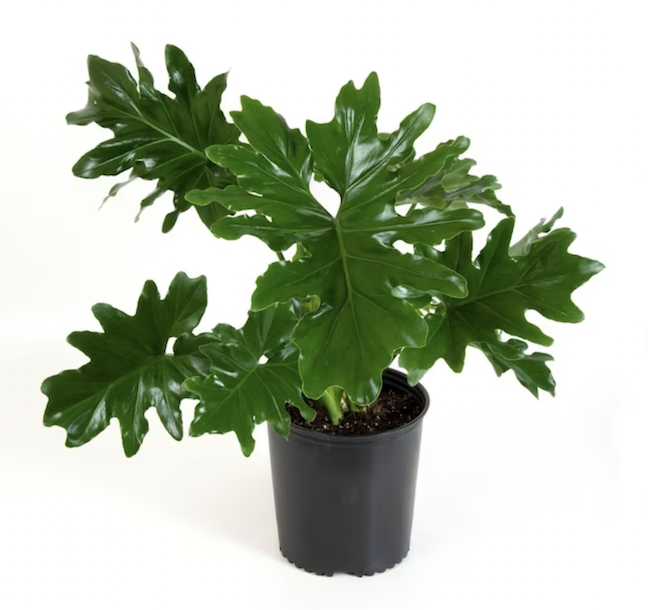
Low maintenance and easy to keep alive, philodendron is an excellent choice for those with brownish thumbs. This tropical plant boasts stunning glossy heart-shaped leaves; some varieties will vine and climb. These plants are great at removing formaldehyde, toluene, trichloroethylene, and xylene from airborne dust in the atmosphere. With such a large variety of species, you can be sure to find a plant that works for you, such as a horsehead philodendron.
RELATED: 20 Low-Light Houseplants You Can Grow Practically Anywhere
9. Ficus Alii (Ficus maclellandii)
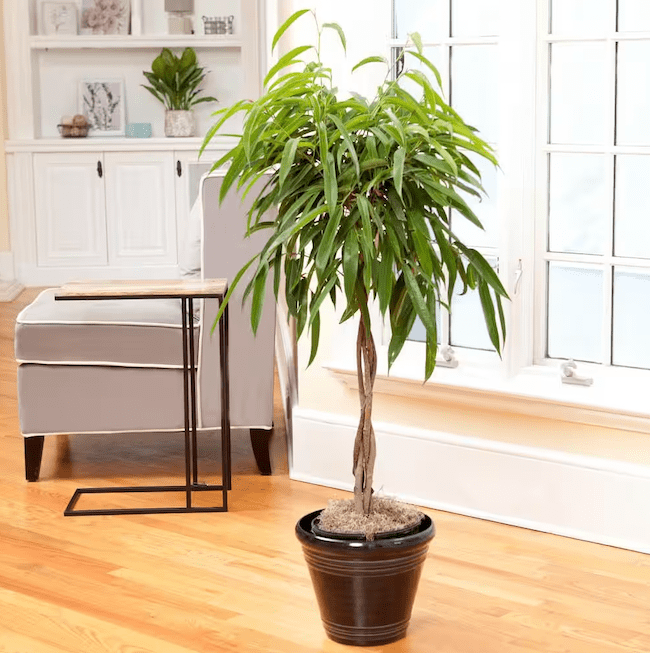
Ficus alii is a bit of a newcomer on the houseplant scene. It is a tree with long, slender, glossy leaves that resemble the shapes of bananas, giving it its nickname of banana leaf fig. This plant is effective at filtering out formaldehyde, but it needs to be dusted and rotated often to keep the tree photosynthesizing and thus helping contribute to cleaner air. A beautiful statement plant, the ficus alii is a little less fickle than other indoor trees, making it a wonderful addition to a home.
RELATED: 14 Symptoms of an Unhappy Houseplant (and How You Can Treat Them)
10. Aloe Vera (Aloe barbadensis ‘miller’)
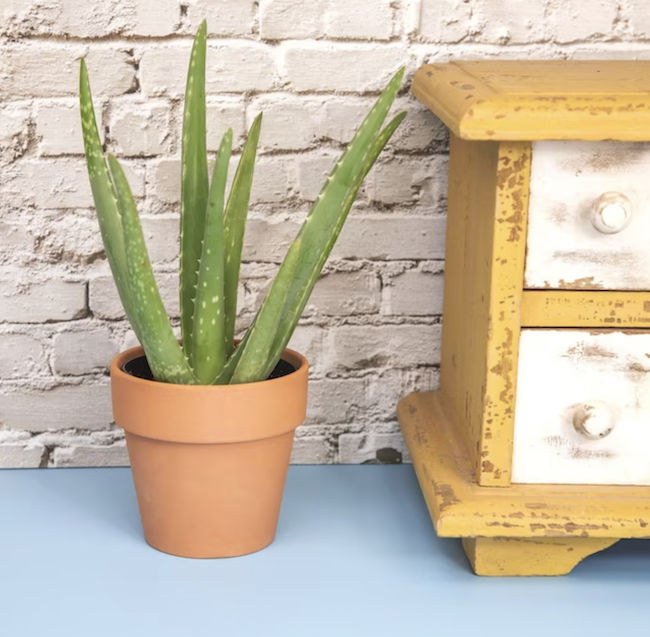
Aloe vera is a valuable plant to have in your indoor space. Known for its medicinal properties, like helping with sunburns and burns, and for its beauty regimen help, aloe vera is also a great helper when it comes to pulling harmful substances out of dusty air. Aloe vera plants can remove benzene and formaldehyde from the air, according to a NASA Clean air study, giving this little beauty a great reason to become your new roommate.
RELATED: The Best Houseplants for Every Shade of Green Thumb
11. Jade Plant (Crassula ovata)
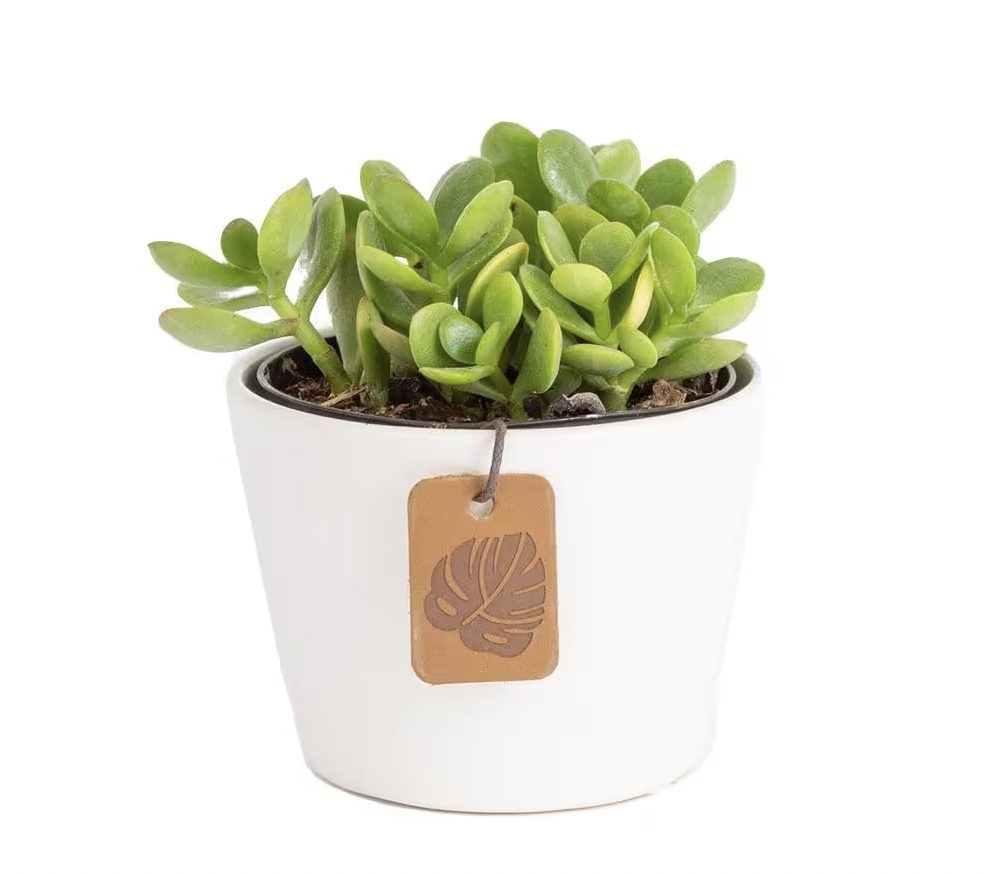
Jade is a succulent plant with a woody trunk and 1- to 2-inch fleshy oval leaves. Easy to care for and a lovely addition to a windowsill or tabletop, jade plants last a long time and are proven helpers for filtering particulate matter. A study by Vadoud Niri shows that jade is one of the best houseplants for removing toluene; however, it also removes other airborne pollutants.
RELATED: It’s Not Me, It’s You: The 15 Toughest Houseplants to Keep Alive
12. Pothos (Epipremnum aureum)
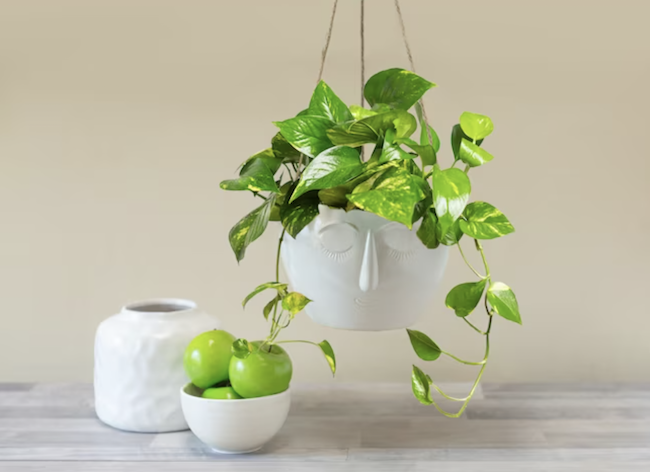
It seems like most households have a pothos or two. These vine plants with heart-shaped leaves are easy to grow and propagate, and their plentiful foliage can collect a lot of dust. Be sure to wipe the dust off regularly to keep the plant looking fresh and create more real estate for additional dust to land.
Think of pothos as a maintenance plant that helps clean the air. According to a NASA study, pothos can remove benzene and formaldehyde from the air. These fast-growing plants come in various colors and variegations, like this golden pothos.
RELATED: Count On These 25 Indoor Plants for Easy Color Year-Round


